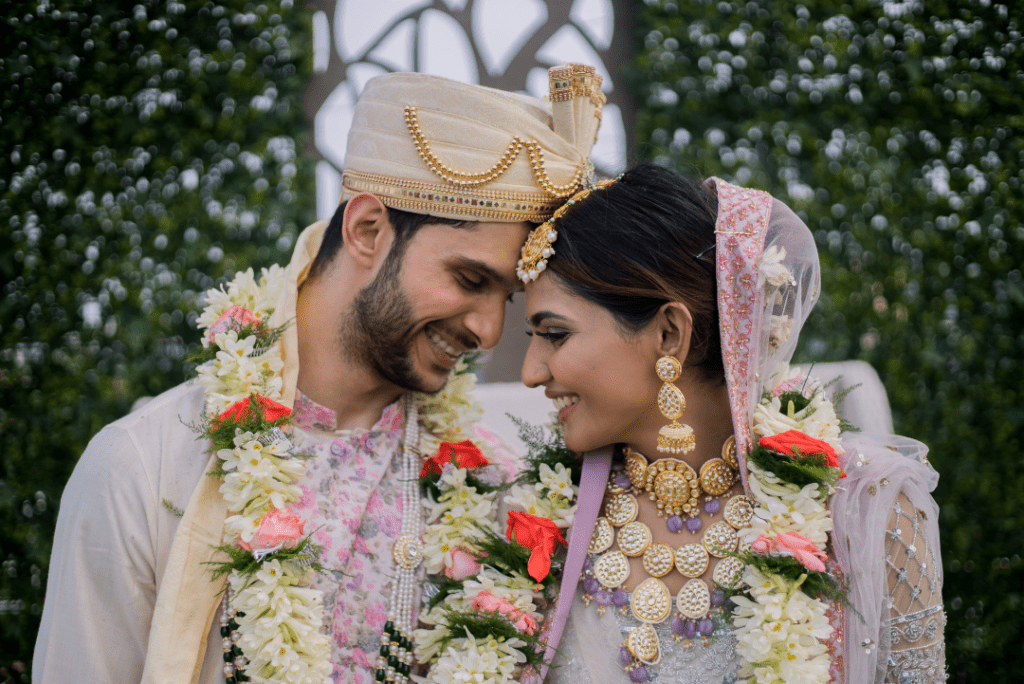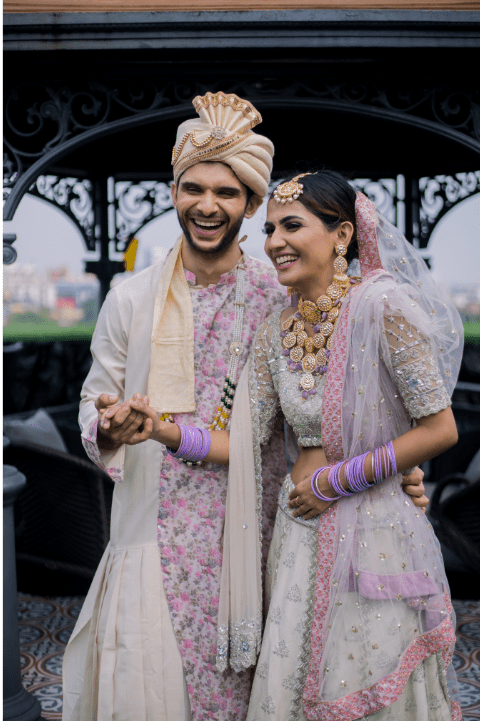South Asian culture is mostly fused together in the Western world, but it’s important to understand that Sikh weddings are unique events in their own right.
The dynamic symbolism of these ceremonies sets them apart from Muslim and Hindu traditions. It’s truly an amalgam of heritage, personal choices, and several traditions that reflect Sikhism at its finest.
If you’re curious about how Punjabi Sikh weddings are carried out, here’s everything you need to know about them:

Sikh marriages have been boiled down to catchy Bollywood songs in mainstream media, but they are so much more. In fact, a typical Punjabi wedding doesn’t happen in one day – instead, it’s a composition of various pre and post-wedding events that happen over the course of several days. It consists of numerous ceremonies that reflect the traditions involved in the Sikh culture. Let’s take a look at them in succession:
Parental consent is the center of every Sikh marriage, be it love or arranged match. The Roka and Thaka ceremony celebrates this by having the bride’s father visit the groom’s house and applying the “Tilak” mark on the groom’s forehead. A gift set of traditional sweets and clothes is accompanied. Some families also go the extra mile by gifting a ring or a bangle. The groom’s father then visits the bride’s family in a similar vein to show his approval as well. This whole ceremony occurs before the engagement.
This is considered the official engagement ceremony, where the ladies from the groom’s side present the bride with her wedding outfit and jewelry. Afterward, they splay a simple red chunni on the bride’s head to mark the end of the ritual.
The location of this ceremony is either the groom’s house or the Gurdwara (the Sikh place of prayer). It’s where the groom gives the bride a ring and is, in turn, presented with a steel bangle and a knife that represents the heroism of the Sikh culture. The Priest offers a short prayer to seal the deal.
These are just the beginning. The traditional Sikh wedding is comprised of many more sub-ceremonies that include the Shagun (where gifts are prepared from the bride’s side for the groom’s side), the Maiya (where turmeric paste is applied to the bride and groom approximately 5 days before the wedding), and Gaana (where a red string is tied on the bride and groom’s wrist to protect them from negative occurrences.

Now that we’ve looked at pre-wedding Punjabi marriage rituals, here are the most important ones that happen on the actual day:
Literally translating to “the ceremony of joy,” this ritual happens in the Gurdwara; The Sikh place of worship.. It entails the recitation of “Shadabs” or musical compositions of the Sikh religious text and is deeply rooted in the Sikh culture.
This is a ceremony where the bride’s family greets the groom’s family at the venue of the wedding. It’s a boisterous affair and can be as extravagant as one can make it. Some baraat’s include the groom riding in on a royal horse while the wedding party rides in on accompanying buggies. Sometimes, there are mini rituals within the baraat that include the bride’s party blocking the venue entrance and ask for gifts from the groom in exchange.
This particular ritual is all about bringing the two families together. It consists of every member of both families greeting each other individually. The affair is cosy, made even more so by the elders being acquainted over hot cups of tea.
This is where the Sikh marriage deviates to a more religious phase. Everyone stands together to reflect on their inner values while the couple is prepared for the official wedding.
Just like the wedding vows phase in a western ceremony, the Lavaan is where religious scripture is recited or sung in the Gurdwara while the couple sits next to each other on the floor. Then the couple walks around Guru Granath Sahib four times to signify that they’d live a life centered around him after their union.
The Jaggo Ceremony is a lively end to the whole Punjabi wedding affair. This is where all the bride’s female relatives come together and perform a dance ritual with pots on their heads. These pots are further accentuated with oil candles. The whole affair is mesmerizing and ends with the dancers being rewarded with the “barfi” sweet and hot cups of tea afterward.
Sikh weddings are held at their official place of worship, the Gurdwara. Its a place of comfort and refuge, which is why holding the ceremony there is extra special. The seating arrangement separates the men and women. After paying their respects to the Guru, the men congregate and sit on one side while the ladies sit on the other.
The decorations are as elaborate or minimalist as the couple desires. Punjabi weddings are all about the details, though. You’ll see a lot of lights, flower garlands, rose petals on the floors or rugs, and even sheer fabric pieces to create a nice, romantic ambiance.
There’s a whole ceremony centered around food in a Punjabi wedding. After the bride and groom have been officially wed, they lead the guests to the congregational hall of the Gurdwara. Here, the “roti” ceremony takes place, where the groom’s side prepares a special platter for the bride to welcome her into the family and celebrate her status as a married woman. There’s usually a stack of cash nestled next to the food.
Brides are sent off at the wedding in the “Doli” ceremony. It’s where just the groom is invited to the bride’s home at the end of the wedding ceremony. There, they are served sweets and snacks, after which the bride is sent off in an emotional ceremony. She then throws a hand full of rice in her mother’s hands as a symbol of thanks for raising, loving, and nurturing her. Both the bride and groom then hop into their car and take off!
The Sikh marriage attire is elaborate, fancy, and traditional. The grooms wear a white “kurta” which is overlaid by the traditional “sherwani” (a fancy overcoat of sorts). The bottoms include a simple “Pajama” which contrasts the elaborate thread work of the sherwani. On his feet is the traditional shoes called the “Mojri” and on the head is a Turban that is ritually pink in color.
As for the brides, they adorn ornately hand embroidered shalwar kameezes or legangas. They’re laden in jewelery and their heads are covered in beautiful dupattas to cap things off.
As you can see, a Sikh wedding is an elaborate affair. There are so many mini-rituals that take place before and after the wedding ceremony itself. One can say that this particular wedding takes place over the course of an entire month, with each ritual taking place over the course of multiple days.
It depends on the date and time, but the dress code is different with the day ceremony at the Gurdwara and the reception that is held afterward. For the former, you need to wear modest clothing and ensure that the head is covered. Pro tip: make sure you wear something comfortable, as you’ll have to sit cross-legged on the floor for quite a while. For the reception, you can be as modernist as you want to be.
Sikh weddings are different from Western ones in the fact that they are steeped in culture, take root from and honor a completely different religion, and are definitely family-oriented affairs.


Make your tables look like a showpiece using our floor-length tablecloths. We offer a variety of colors and sizes, prints, and textures from our in-house design collection, and don’t forget about your cocktail tables, cake table, and welcome table when choosing the suitable linen for your tables.